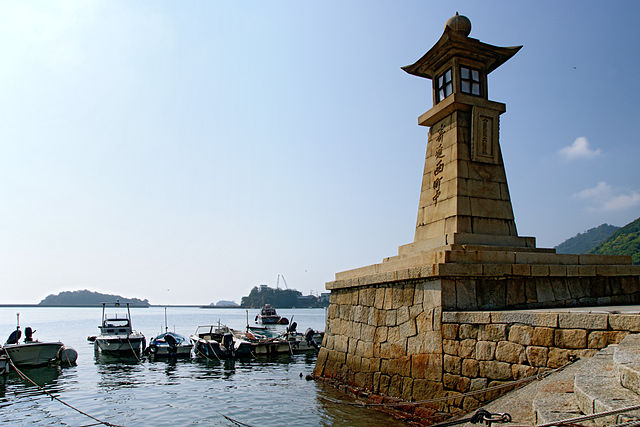Aug 14, 2021
Escape Hiroshima’s Rat-Race and Head to… Tomonoura!
As summer winds down and we have cooler mornings and evenings, it is the perfect time of year to consider places worth visiting to restore your spirit and sanity. One such place is a sleepy, little fishing village called Tomonoura, often mentioned as an up-and-coming tourist destination.
To explain how out of the way Tomonoura is, it is best to consider how to get there by bus from Fukuyama Station. The bus takes roughly 35 minutes. There was a train line, but it was discontinued in the ’50s. Because of this, most access to Tomonoura is by car. This becomes a positive rather than a negative point as visitors will find the town less crowded with tourists than other areas of Japan. The day I visited, I was the sole foreigner, and rather than being viewed with suspicion as to why I would want to visit such an off-the-beaten-track place, I was welcomed warmly with big smiles and hearty hellos from the locals. As I stepped off the bus and walked along the waterfront, the only sounds I could hear were the boats creaking against one another and the cries from the birds that circled overhead. It’s the kind of place where your breathing slows down, your shoulders visibly relax, and you find yourself smiling at everyone and everything. In other words, it’s just what you need.
Tomonoura is a great place to wander around and explore. Maps are available, but the town’s size means that you can freely stroll the maze-like streets taking in the sights, sounds, and shops. Right on the water’s edge, you’ll find the famous Joyato Lighthouse, which dates from the Edo Period (1603-1867) and serves as a town symbol. Some excellent cafes serve wonderful cakes and coffee. In the back streets, you’ll find many shrines and temples that you can also visit, but my suggestion is to locate one of the many shops that sell houmeishu, a 16 herb medicinal sake that is said to give vitality to all those who drink it. I’m not sure about vitality, but I do know that drinking it for breakfast each morning, as they recommend on the website and in the brochures, sure does give you a buzz. At 14% alcohol, even from a small sake cup, it’s enough to pack a punch and make you feel suitably relaxed. You’ll realize it is a good thing that there is a bus back to the Fukuyama Station. The houmeishu will make an excellent memento of your trip, so get a bottle or three as a great gift for friends or even yourself.
Recently, Tomonoura has become doubly famous for being the source of inspiration for Hayao Miyazaki’s animated film, ‘Ponyo,’ and the Hollywood blockbuster, ‘The Wolverine,’ starring Hugh Jackman. The visitor center is a great place to pick up a little souvenir of your trip, and believe me; there are many little Ponyo toys to choose from. If you like Hugh Jackman (and let’s be honest, who doesn’t?!), it’s also fascinating to think that you’re standing where he did in scenes from the movie.
From Hiroshima, it is a fair way to Tomonoura, and you’ll need to take a train and then a bus. The local train from Hiroshima Station to Fukuyama Station takes approximately two hours and will require changing trains at either Itozaki or Mihara Station. Of course, you do have the option of taking the Shinkansen, which will only be 20-50 minutes or so, depending on which Shinkansen you use. The price for the local train is just under 2000 yen, but of course, a reserved seat on the Shinkansen will cost you 3000 yen. It all depends on how much time you have and how much you are willing to spend.
The bus to Tomonoura leaves from bus stop number five, right outside Fukuyama Station. According to all the websites, it’s around 30 minutes, but I can say it’s less than that, having been there myself. It will cost you 520 yen to the visitor center in Tomonoura, or 550 yen to the Tomo Port bus station just near the lighthouse.
Overall, Tomonoura is a lovely little place to visit and the ideal place to get away from the hustle and bustle of city life. I guarantee that you will feel ready to face the daily grind of life in the city again when you leave. Then again, there is the possibility that you won’t want to leave…
For more information on both Tomonoura and the medicinal sake, please refer to these websites:
http://www.fukuyama-kanko.com/english/hyaka/area_tomonoura/index.html
http://fukuyama.oriental-web.co.jp/en/houmeisyu.html
663highland, CC BY-SA 3.0, via Wikimedia Commons


About the author